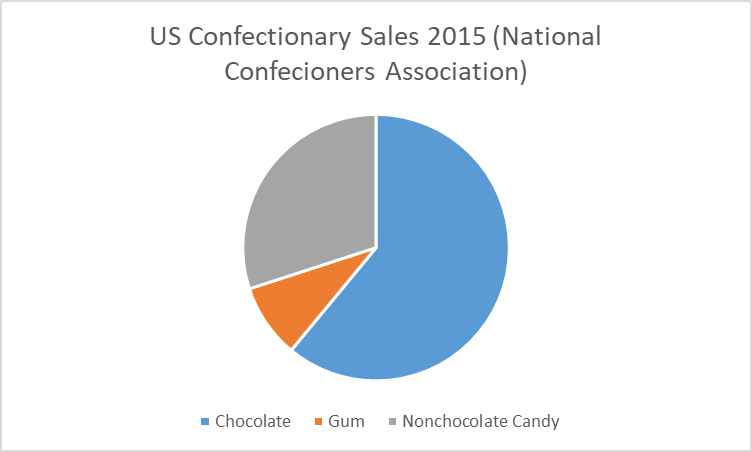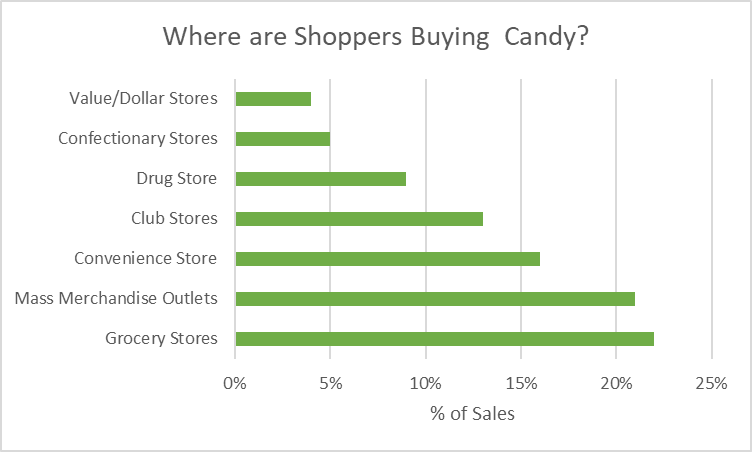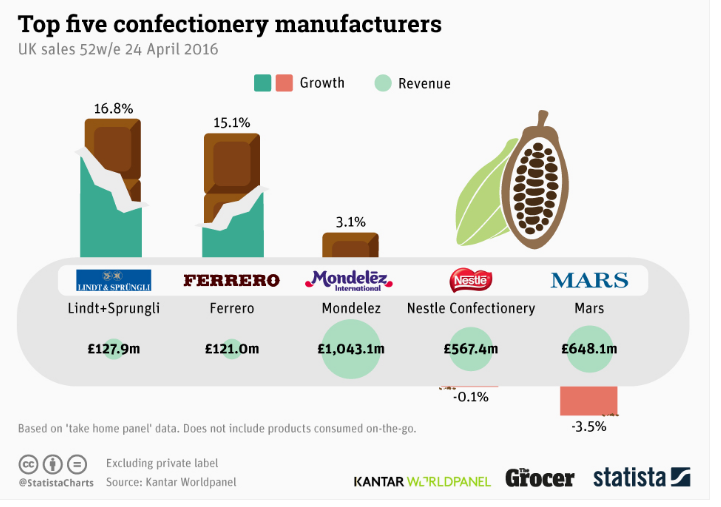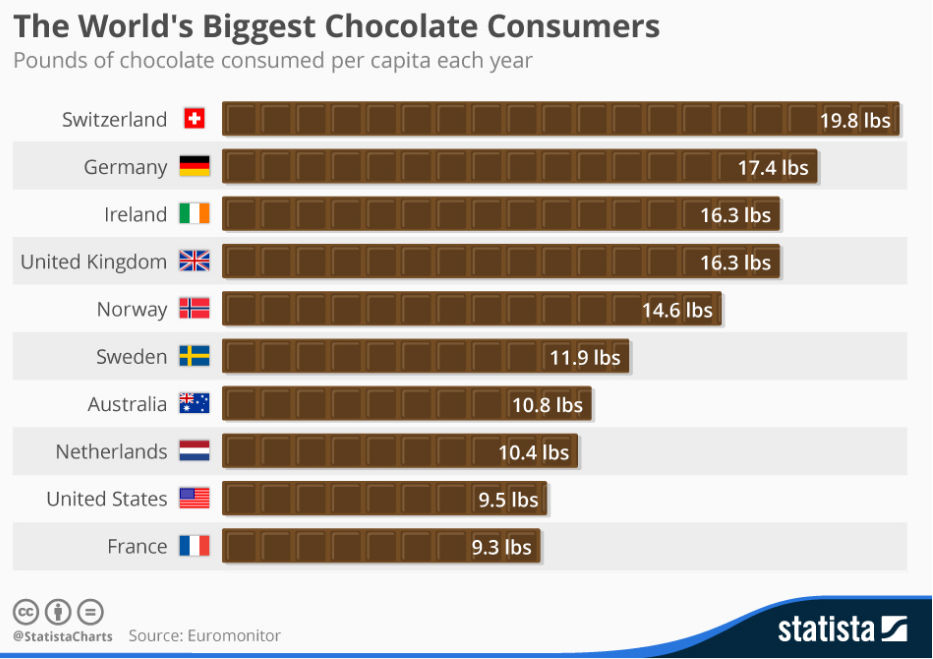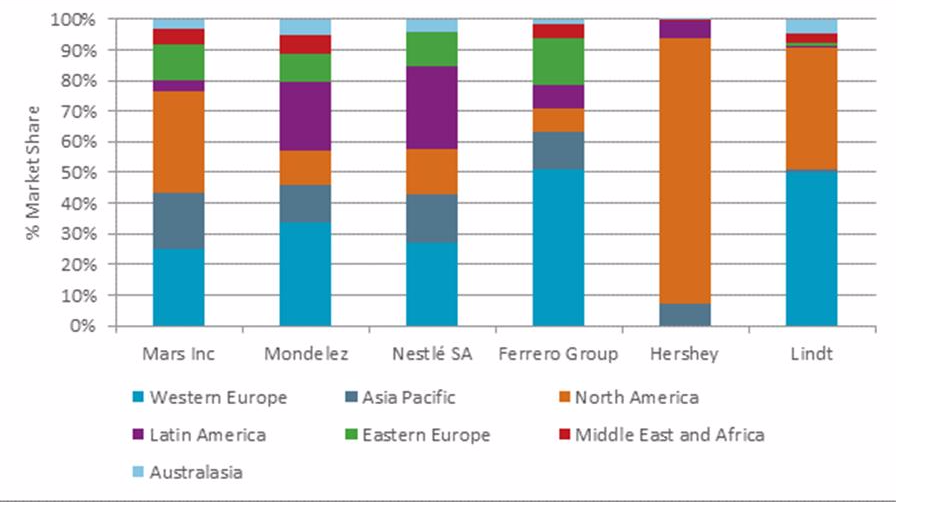Industry Trends: Gourmet Confectionery 6/22/2017
Sweet Facts
- Chocolate candies account for about 60% of US confectionery sales, nonchocolate candy for about 30%, and gum for about 10% *NCA
- The global confectionery market is set to reach approximately $275.8 billion by 2025 *businesswire.com
- 50% of the world’s cocoa production comes from Europe *Caobisco
- The confectionery industry directly employs over 55,000
- The confectionery industry has an economic impact of $35B *NCA
- 40% of consumers now eat dessert twice a week or more often, up from just 36% in 2011 *Techonomic
- $75 Million! The price of most expensive cake in the world was purchased by a buyer in the U.A.E. for his daughter’s birthday/engagement party. The cake was designed by British designer Debbie Wingham and features 4,000 diamonds.
- Other absurdly expensive desserts include a gold flaked cupcake for $1,007, a Dom Perignon topped cupcake for $1682, and an ice cream sundae with 28 types of cocoa for (only) $25,000. *Tastemade 2016
- The candy manufacturing industry includes three major segments: companies that make chocolate from beans, companies that use purchased chocolate to make candies, and companies that make nonchocolate candy. *Hoovers 2016
Industry Forecast & Growth
- Revenue (in current dollars) for US confectioneries manufacturing is forecasted to grow at an annual compound rate of 3%between 2017 and 2021, based on changes in physical volume and unit prices. Data Published: February 2017. *D&B First Research
- US imports of chocolate made directly from cocoa beans grew more than 80% between 2005 and 2015, to account for about 60% of the US market. Nonchocolate candy imports grew about 40% during the same period to account for about 20% of the US market.
Business Challenges
Raw Material Prices — Prices of key raw materials such as cocoa beans, dairy products, and sugar can change without warning. Cocoa bean prices can be volatile due to civil unrest in the key producing region of West Africa. US dairy producers may increase prices by more than 30% in a year.
Innovate — New products can help manufacturers attract the attention of impulse buyers, particularly for products with recognizable brand names. Companies invest heavily in research and development to create candies that come in a variety of different colors, flavors, shapes, and textures. Candy makers are also experimenting with new types of sweeteners and natural ingredients in response to growing consumer demand for healthier treats. *Hoovers
Over the past few years, premium chocolate sales increased 56 percent. As a result, confection- and snack-makers have their eyes on luxury and gourmet markets looking forward. Candy companies incorporated high quality ingredients and flavors like champagne and Himalayan sea salt. *NCA 2015
New Segments
“Functional” Candy - Health concerns have contributed to the rising popularity of functional candy, which offers a few ‘good for you’ ingredients. Examples includes sore throat or vitamin C sweets. Other instances include the appearance of collagen and iron in candy. Collagen is a protein associated with anti-aging while iron is associated with good health and energy, is beneficial for skin complexions and often taken to prevent anemia. *Mintel 2016
Innovation based on demographic needs can help market growth. In the six months to August 2016, while three in four Chinese consumers consumed gum and three in five ate mints, 45% of these consumers ate functional candy – reflecting an opportunity for the subcategory.
*Mintel 2016


